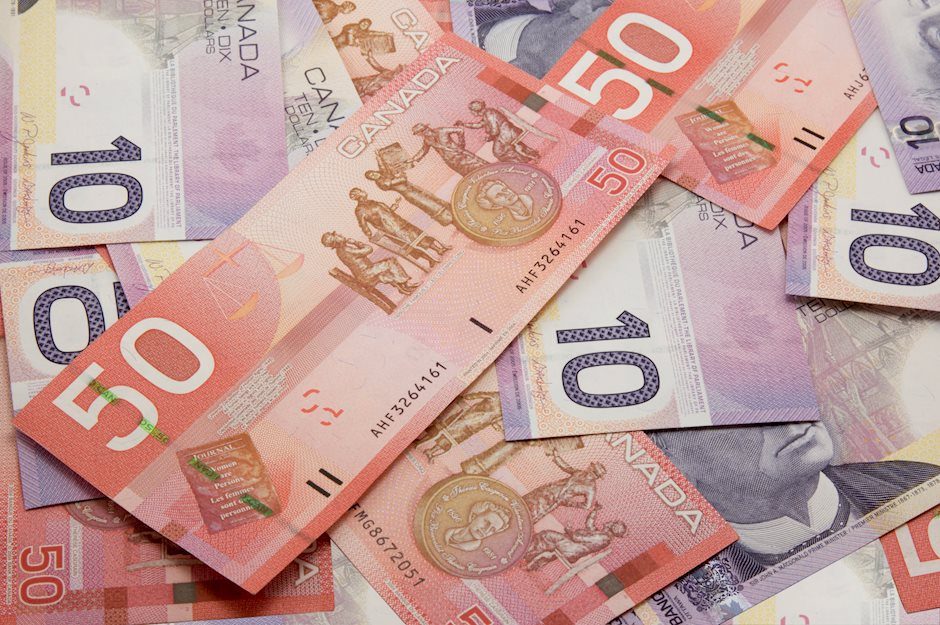USD/CAD remains depressed around mid-1.4300s, downside seems limited ahead of FOMC Minutes
- USD/CAD drifts lower on Wednesday and is pressured by a combination of factors.
- Bullish Crude Oil prices underpin the Loonie and weigh on the pair amid a softer USD.
- The Fed’s hawkish stance could help limit any further losses ahead of FOMC Minutes.

The USD/CAD pair struggles to capitalize on the previous day's bounce from sub-1.4300 levels and attracts some sellers during the Asian session on Wednesday. Spot prices, however, hold comfortably above the lowest level in over two weeks touched on Monday and currently trade around mid-1.4300s, down less than 0.10% for the day.
As investors digest the recent political developments in Canada, hopes that Canada's economy could escape broad-based US tariffs turn out to be a key factor lending some support to the domestic currency. Furthermore, Crude Oil prices stand firm near a multi-month peak, which further seems to underpin the commodity-linked Loonie and exert some downward pressure on the USD/CAD pair amid a softer US Dollar (USD).
Any meaningful downside for the buck, however, seems limited amid the prospects for slower interest rate cuts by the Federal Reserve (Fed) in 2025. The bets were reaffirmed by Tuesday's upbeat US macro data, which pointed to a still resilience economy amid the optimism over US President-elect Donald Trump's expansionary policies. This remains supportive of elevated US Treasury bond yields and favors the USD bulls.
Apart from this, persistent geopolitical tensions stemming from the protracted Russia-Ukraine war and tensions in the Middle East, along with trade war fears, support prospects for the emergence of some dip-buying around the safe-haven buck. This, in turn, warrants some caution before placing aggressive bearish bets around the USD/CAD pair and positioning for an extension of the recent pullback from a multi-year peak.
Investors now look forward to the US economic docket – featuring the release of the ADP report on private-sector employment and the usual Weekly Initial Jobless Claims data – for some impetus later during the early North American session. The focus, however, will remain glued to the FOMC meeting Minutes, which will influence the USD price dynamics and produce some meaningful trading opportunities around the USD/CAD pair.
Canadian Dollar FAQs
The key factors driving the Canadian Dollar (CAD) are the level of interest rates set by the Bank of Canada (BoC), the price of Oil, Canada’s largest export, the health of its economy, inflation and the Trade Balance, which is the difference between the value of Canada’s exports versus its imports. Other factors include market sentiment – whether investors are taking on more risky assets (risk-on) or seeking safe-havens (risk-off) – with risk-on being CAD-positive. As its largest trading partner, the health of the US economy is also a key factor influencing the Canadian Dollar.
The Bank of Canada (BoC) has a significant influence on the Canadian Dollar by setting the level of interest rates that banks can lend to one another. This influences the level of interest rates for everyone. The main goal of the BoC is to maintain inflation at 1-3% by adjusting interest rates up or down. Relatively higher interest rates tend to be positive for the CAD. The Bank of Canada can also use quantitative easing and tightening to influence credit conditions, with the former CAD-negative and the latter CAD-positive.
The price of Oil is a key factor impacting the value of the Canadian Dollar. Petroleum is Canada’s biggest export, so Oil price tends to have an immediate impact on the CAD value. Generally, if Oil price rises CAD also goes up, as aggregate demand for the currency increases. The opposite is the case if the price of Oil falls. Higher Oil prices also tend to result in a greater likelihood of a positive Trade Balance, which is also supportive of the CAD.
While inflation had always traditionally been thought of as a negative factor for a currency since it lowers the value of money, the opposite has actually been the case in modern times with the relaxation of cross-border capital controls. Higher inflation tends to lead central banks to put up interest rates which attracts more capital inflows from global investors seeking a lucrative place to keep their money. This increases demand for the local currency, which in Canada’s case is the Canadian Dollar.
Macroeconomic data releases gauge the health of the economy and can have an impact on the Canadian Dollar. Indicators such as GDP, Manufacturing and Services PMIs, employment, and consumer sentiment surveys can all influence the direction of the CAD. A strong economy is good for the Canadian Dollar. Not only does it attract more foreign investment but it may encourage the Bank of Canada to put up interest rates, leading to a stronger currency. If economic data is weak, however, the CAD is likely to fall.
Author

Haresh Menghani
FXStreet
Haresh Menghani is a detail-oriented professional with 10+ years of extensive experience in analysing the global financial markets.

















